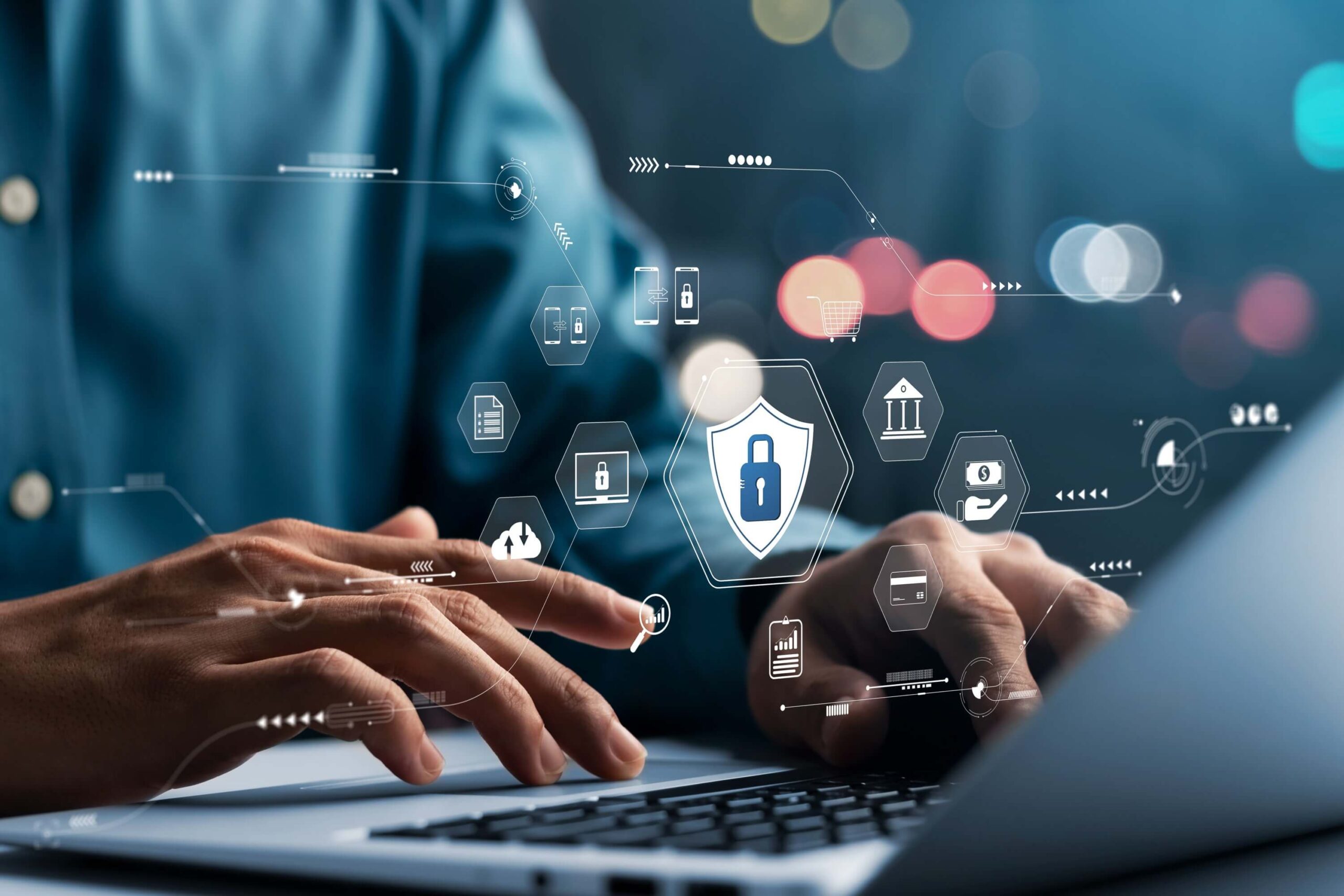Table of content
These days, online conflict is hard to miss. It’s in the group chats that blow up over nothing, the vague posts that spiral into arguments, the screenshots that spread faster than the truth. According to the CDC’s 2024 report, high school students glued to social media are facing more electronic bullying, more anxiety, and more dark thoughts.
What used to simmer face-to-face now explodes over text. There’s no tone, eye contact, or even a pause where someone might rethink what they were about to say. Platforms like TikTok and Discord make it way too easy to fire off a comment and disappear.
That’s exactly why de-escalation training matters as a survival skill. Without de-escalation training, people panic: They pile on or shut down.
Understanding Digital De-escalation
De-escalation online is the moment you notice things starting to tip. That sinking feeling in a heated thread or the shift in someone’s replies. If you can de-escalate early by redirecting, pausing, or resetting, you change the outcome. Whether it’s a school chat or a customer meltdown, don’t let temporary emotion cause permanent fallout.
Psychologists call this the “online disinhibition effect.” Basically, when we’re behind a screen, we feel less accountable. That disconnect makes it easier to lash out or assume the worst.
A 2024 study even found that people who struggle with emotion regulation tend to post more aggressively online. They do that not because they’re mean, but because digital environments lower their impulse control.
And the stakes are real:
- The NCES reports that 22% of bullied students experienced it online or by text in 2021–2022.
- Pew Research found that older teen girls are more likely to experience multiple forms of online harassment (32%) compared to younger teens (22%).
- UNESCO reports show that over 20% of eighth graders globally have encountered cyberbullying in school contexts.
But it’s not just teens. In the workplace, the Microsoft Work Trend Index says employees get interrupted every two minutes, most often by digital messages.
That kind of nonstop digital chatter is a recipe for misreading tone, jumping to conclusions, and letting minor issues grow into bigger ones. When that happens, people struggle to respond appropriately, and the lack of a shared emotional baseline only makes things worse.
We’ve seen this before. In many cases, understanding the meaning of de-escalation, especially in digital spaces, is the first step to changing how we handle it.
Techniques for Digital Communication
It’s easy to underestimate how much communication breaks down online. But there are methods that make misunderstandings less likely and conflicts less damaging. Many of these methods come directly from de-escalation training , where people practice adjusting tone, pacing, and response style. Most are small shifts in structure or timing, but small shifts are how we de-escalate . And when teams commit to ongoing de-escalation training , those skills become habits, helping conversations recover before they collapse into bigger problems.
Tone & Clarity in Written Channels
People can’t read your face online, so your words do the heavy lifting. Short paragraphs, straightforward phrasing, and soft openers go a long way. “I noticed you had a concern. Can we talk more about it?” feels different from “This is getting ridiculous.” It’s subtle, but powerful.
When things get heated in public, say, on a brand’s Instagram post, de-escalating by switching the conversation to DM helps everyone save face. One person de-escalates, and others often follow.
Active Listening in Digital Spaces
Even online, people want to feel heard. That’s where de-escalation techniques like mirroring and labeling come in.
“That sounds frustrating,” or “I can see why that would be upsetting,” creates space for the other person to pause. Then, summarizing next steps, such as “Here’s what we can do,” adds structure and calms ambiguity.
These are core de-escalation skills in conflict resolution because they reduce emotional arousal, which is what usually drives things off track.
Managing Nonverbal Gaps
In real life, facial expressions say a lot. Online? They disappear. That’s why we must be careful with tone, especially sarcasm. What reads as funny to one person might read as hostile to someone else.
Formatting also helps when de-escalating. Use bullet points when emotions are high. Avoid all caps. Emojis can clarify tone, but ambiguous ones (🙃) often make things worse. Punctuation can affect how people read your intent.

Bystander Interventions
One of the more overlooked de-escalation techniques is what happens when you’re not the target, but you’re watching. Studies show that when bystanders speak up gently but clearly, it often changes the tone of the thread. That could mean saying, “Let’s give people space here,” or simply reporting abusive comments quietly.
Empathy-based bystander de-esclation training works because it helps people avoid further escalation without escalating themselves. And when a few people do it, the entire digital culture starts to shift.
Platform-Specific Tools
Tools also matter. Instagram lets you restrict accounts, use hidden words, and trigger comment warnings. TikTok offers fast reporting flows and has recently strengthened its anti-bullying guidelines. YouTube allows creators to filter certain keywords, hold comments for review, or even block threats entirely.
These tools are part of de-escalation techniques that prevent public situations from becoming full-blown crisis situations. But they only work if we know when and how to use them.
For example, during a brand storm on X, shifting to factual updates, pinning a clear FAQ, and limiting toxic replies can de-escalate a situation fast. In a school Discord server, moderators can enable slow mode, filter slurs, and create read-only “info” channels to steady the room.
Each of these examples shows that digital conflict doesn’t have to erupt. With the right online conflict management strategies, it can be contained or even prevented. The key is knowing how to de-escalate before emotions take over.
Training Programs
We don’t just teach theory. We build de-escalation training that sticks. Whether you’re a frontline worker, educator, or healthcare professional, our de-escalation training programs are designed to meet you where the tension happens.
This can be in DMs, patient rooms, support chats, or even teacher-parent messages that go sideways fast. Digital spaces demand new tools, and we shape our de-escalation training to fit that challenge: practical, real-world, and built for now.
On-Demand Courses
For those who need flexible learning, our 90-minute self-paced de-escalation training courses offer targeted de-escalation training across sectors. Whether it’s handling angry customers, calming down a distressed patient, or responding to digital outbursts in schools, these lessons bring de-escalation into everyday digital interactions.
Our de-escalation training courses are industry-specific, scenario-rich, and available in both English and Spanish.
Our objective is to teach people how to de-escalate real messages and effectively manage tone before it goes too far. In our customer service de-escalation training, for instance, learners practice adjusting phrasing for tense threads, avoiding inflammatory follow-ups, and recognizing when escalation is likely.
These are the kinds of de-escalation skills that help people stay grounded, even when customers don’t.
Instructor-Led Workshops
For teams that need a deeper dive, our de-escalation training include live sessions, either virtually or in person. Some businesses bring us in for a single training day, while others build out full de-escalation training calendars.
We work with departments that deal with high-risk conversations: mental health services, local governments, school counselors, and even real estate and hospitality groups managing volatile guest interactions.
We’ve created specific de-escalation training workshops for call centers navigating complaint escalation and for hospitals responding to emotionally overwhelmed patients and family members. Our conflict resolution in healthcare sessions explore how staff can shift communication tone during digital hand-offs or heated post-discharge emails.
We tailor our de-escalation training sessions with real case studies so learners absorb theory and also see how to de-escalate during crises and carry those tools forward.
Defuse Methods
Every de-escalation training program we run integrates our core methodology. That includes the psychology of escalation, recognizing patterns in aggressive behavior, and practicing our HEARD methods: Hear, Empathize, Apologize, Resolve, Diagnose. This gives people more than scripts. It gives them a playbook to approach a tense situation with clarity.
We also teach how to navigate online conflict across platforms, including social media. There’s a way to validate a concern without agreeing with harmful behavior. There’s a way to slow things down without going silent.
That’s the level of nuance we bring to de-escalation training. And that’s why teams trust us not only to reduce workplace blowups but also to prevent them.
Benefits of Digital De-escalation
People usually think to de-escalate means calming someone else down. That’s part of it, but not all. To de-escalate also means how we talk, how we react, and, honestly, how we avoid turning small problems into bigger ones.
When you deal with online conflict every day, you learn how to pause or pull back. That changes things.
Mental Health & Safety
Teens don’t just scroll. They absorb. The CDC’s 2024 report linked frequent social media use with sadness, even hopelessness. Screenshots and even callouts stick. When no one knows how to de-escalate, it just keeps going. Slowing it down can protect more than feelings. It protects people.
Learning to de-escalate these interactions, whether you’re the target, the bystander, or the adult trying to help, can make a difference. It reduces shame, breaks the cycle of further escalation, and opens space for better responses.
For schools that build de-escalation skills into daily habits, the shift is behavioral as well as emotional.

Workplace Productivity & Communication
In offices and virtual teams, de-escalation training directly improves how people work. According to Microsoft’s Work Trend Index, 62% of employees struggle with the time lost to scattered communication. A lot of that comes from rework: misread messages, defensive reactions, and unresolved friction.
If we know how to effectively de-escalate heated Slack threads or urgent late-night emails, we’re protecting feelings and saving time. When teams practice structured conflict resolution and escalation ladders, they spend less energy putting out fires and more energy building. It’s not complicated: Calmer people collaborate better.
Customer & Organizational Trust
Trust is fragile in public spaces. That’s why we coach teams to move public complaints to DM, de-escalate emotionally charged posts, and respond in ways that don’t invite pile-ons. The goal isn’t to control the conversation but to shift it into a space where people can resolve conflicts without performance pressure.
Even in schools, where conflict often plays out in parent WhatsApp groups or student forums, bystander training has proven to improve outcomes. Empathy spreads. Calm becomes contagious.
When brands and educators commit to real conflict resolution strategies for digital marketing agencies or community settings, people notice and trust builds.
Implementing Strategies
Knowing de-escalation techniques is one thing. Applying them consistently is the hard part. We work with organizations to set routines and build habits, so responses aren’t left to chance. It takes some planning, but the results speak for themselves.
Set Escalation Ladders
First, define your thresholds:
- What gets a hidden comment?
- What moves to DM?
- What needs to be reported?
Mapping this out gives employees a roadmap so they’re not stuck guessing. It also helps prevent further escalation when the pressure’s high.
In schools, this might mean moving a rumor-spreading thread to a moderated space. In brands, it means knowing when to use “limit replies” or how to flag content with safety teams. That’s part of maintaining order, not through force, but through clarity.
Message Kits & Templates
Next, we help teams build out message kits: short, emotionally neutral responses for common digital flare-ups. Each template follows a rhythm: acknowledge the concern, offer a bounded solution, and set the next step.
Having this ready makes it easier to de-escalate in the moment. No scrambling or passive-aggressive replies; just calm, prepared responses that buy space and time.
De-escalation Training & Drills
We don’t believe in one-and-done de-esclation training. Our clients run 30–45-minute refreshers every quarter, using anonymized screenshots to role-play digital scenarios. We run mock versions of public comment spirals, online conflict between coworkers, and high-pressure customer chats.
These are low-risk ways to build muscle memory. That way, when crises hit, people don’t freeze. They de-escalate with confidence.
Leverage Platform Tools Early
Every platform offers tools, including comment holds, filters, and restrict options, but they only work if people use them early. One delayed response can shift a neutral comment into a viral flameout.
We train teams to toggle these settings proactively, especially during high-traffic events or after mistakes. And we show how increased visibility around moderation builds trust with your audience.
Monitor & Measure
To know whether your de-escalation training is working, track more than volume. Measure time-to-resolution, tone shift, and escalation frequency. If you’re still seeing threads that spiral into blame, your approach needs work.
Workplaces should also track de-escalation metrics tied to rework and overtime. Digital tension often bleeds into after-hours work, which drains morale and leads to burnout. Monitoring these trends gives leadership insight and an early warning system.
Youth & School Contexts
We’ve seen teachers use group “cool-down channels” during digital drama. We’ve also seen students set up anonymous reporting systems with emoji check-ins that track peer tension. The tools are evolving. What matters is teaching young people how to de-escalate conflict without freezing or fighting.
That means teaching privacy hygiene (don’t overshare), emotional literacy (“this comment made me feel X”), and when to step away.
Advocacy & Activism Scenarios
Finally, for communities working in high-risk digital spaces, such as activists, organizers, and frontline advocates, we help prepare de-escalation protocols that prioritize safety. That includes checklists for doxxing response, template takedown requests, and clear, non-inflammatory crisis statements.
It’s not paranoia. It’s preparedness. When you build protocols for pressure, you survive online conflict and shape how others de-escalate conflicts, too.
Are You Ready to Train Your Team?
If your team is constantly reacting by putting out fires or backtracking after a tense exchange, it might be time to reset. We’ve worked with schools, clinics, call centers, and more. Different spaces, same issue: Communication spirals fast when pressure builds.
Our de-escalation training is built for the real stuff: angry emails, bad reviews, staff burnout, all of it. If that’s where you’re stuck, contact us and let’s figure out what works. Because staying calm shouldn’t be the hardest part of the job.



